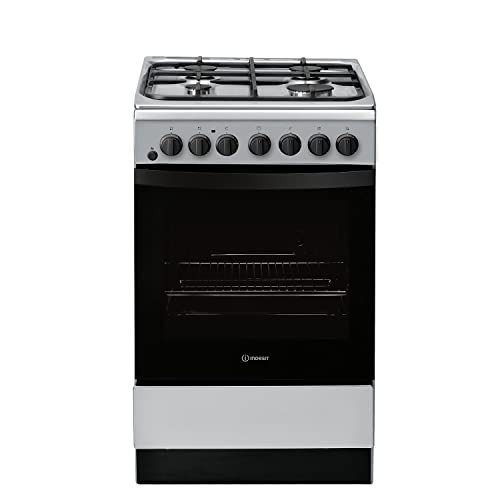Do Not Believe In These "Trends" Concerning Hobs And Ovens

Understanding Hobs and Ovens: A Comprehensive Guide for Cooking Enthusiasts
The kitchen is often regarded as the heart of the home, where culinary developments come to life. 2 essential parts of any kitchen are the hob and the oven. While Fan Oven Sales are both crucial for cooking and cooking, many property owners may not completely comprehend the distinctions, performances, and various types available in the market today. In this article, we will check out these home appliances in information, assisting you make informed choices for your culinary requirements.
Tabulation
- What is a Hob?
- 1.1 Types of Hobs
- 1.2 Benefits of Different Hob Types
- What is an Oven?
- 2.1 Types of Ovens
- 2.2 Benefits of Different Oven Types
- Selecting the Right Hob and Oven for Your Kitchen
- Often Asked Questions (FAQs)
- Conclusion
What is a Hob?
A hob, frequently understood as a cooktop, is a cooking surface that you position cookware on to prepare food. It features a series of heating components and is often set up on counter tops. In modern kitchens, hobs can be found in different designs, innovations, and performances.
1.1 Types of Hobs
There are a number of types of hobs readily available in the market:
| Type | Description |
|---|---|
| Gas Hob | Uses burner for cooking, offering exact temperature control. |
| Electric Hob | Runs using electrical heating elements, commonly seen in strong or radiant types. |
| Induction Hob | Uses magnetic fields to heat pots and pans straight, promoting energy performance. |
| Ceramic Hob | Functions a smooth glass top, making use of electric coils underneath the surface area. |
| Strong Plate Hob | Traditional electric hobs with exposed metal plates that heat up. |
1.2 Benefits of Different Hob Types
Gas Hobs:
- Quick heating and cooling.
- Visual flame control for accurate cooking.
Electric Hobs:
- Even heating; suitable for simmering and boiling.
- Easy to clean up, particularly flat surfaces.
Induction Hobs:
- Energy-efficient as just the pot warms up.
- Security functions, such as automatic shut-off.
Ceramic Hobs:
- Attractive visual appeals with a smooth finish.
- Even surfaces for simple cleaning.
Strong Plate Hobs:
- Cost-effective and long lasting.
- Great for basic cooking needs.
What is an Oven?
An oven is a kitchen home appliance used for baking, roasting, and broiling food. Ovens can be standalone systems or built into kitchen cabinets, supplying various cooking approaches that can improve or transform active ingredients.
2.1 Types of Ovens
Comparable to hobs, there are several types of ovens, each with its benefits:
| Type | Description |
|---|---|
| Traditional Oven | Runs with heating aspects, perfect for baking. |
| Stove | Uses fans to circulate hot air, cooking food evenly and rapidly. |
| Microwave | Cooks food utilizing electro-magnetic radiation; suitable for reheating. |
| Steam Oven | Utilizes steam to cook food, protecting moisture and nutrients. |
| Wall Oven | Built into the wall, using benefit and visual appeal. |
2.2 Benefits of Different Oven Types
Traditional Ovens:
- Simple to utilize with no complicated settings.
- Versatile for numerous cooking approaches.
Convection Ovens:
- Faster cooking times due to air flow.
- Improved browning and crisping for baked items.
Microwave Ovens:
- Quick cooking or reheating of food.
- Energy-efficient for low-volume cooking.
Steam Ovens:
- Health-conscious cooking that retains nutrients.
- Excellent for baking bread and cooking veggies.
Wall Ovens:
- Convenient positioning; conserves space.
- Less bending needed to access cooking dishes.
Picking the Right Hob and Oven for Your Kitchen
When picking a hob and oven, elements such as area, cooking style, and individual preferences must be thought about. Here's a basic guide to help you select:
Factors to Consider
- Cooking Needs: Evaluate your cooking routines. Do you often bake, or is stovetop cooking more common?
- Space Availability: Measure your readily available kitchen space. Some hobs or ovens might need more room than others.
- Fuel Type: Decide in between gas and electric, based on accessibility and personal choices.
- Budget: Determine what you're willing to spend and find alternatives within that range.
Quick Tips
- Prioritize Efficiency: Look for energy-efficient models to reduce long-lasting costs.
- Check out Reviews: Explore user reviews to collect viewpoints on performance and dependability.
- Seek advice from Professionals: Seek recommendations from kitchen style experts when planning your design.
Often Asked Questions (FAQs)
1. What is the difference between a hob and an oven?
A hob is a cooking surface generally for stovetop cooking, while an oven is an enclosed area utilized for baking, roasting, and broiling food.
2. Can I use any pot on an induction hob?
No, induction hobs require magnetic pots and pans. Stainless steel and cast iron pots work, but non-magnetic products like aluminum will not.
3. How do stove differ from standard ovens?
Stove utilize fans to circulate hot air for even cooking, whereas standard ovens do not have this function.
4. Is it possible to have both a hob and oven as a single unit?
Yes, there are variety cookers that incorporate a hob and an oven within one appliance, using a thorough cooking service.
5. How do I clean my hob and oven?
A lot of hobs and ovens have advised cleansing methods depending upon their materials. It is advisable to consult the maker's guidelines for the best practices.
Comprehending the differences in between hobs and ovens is important for anybody seeking to optimize their kitchen space or enhance their cooking skills. By knowing the various types, their advantages, and how to choose the ideal ones for your needs, cooking can end up being a more satisfying and effective experience. Whether you are an experienced chef or a newbie cook, the ideal combination of hob and oven can elevate your cooking developments to brand-new heights.

